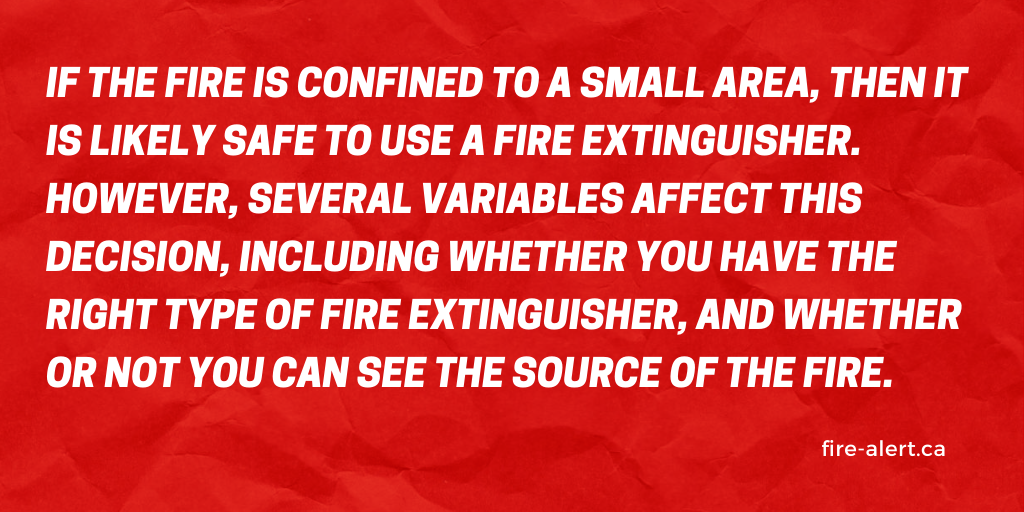Fight or Flight: Should You Try to Put Out a Fire Yourself?
When a small fire breaks out, we’re immediately confronted with the decision of whether or not we should try to put out the flames ourselves. If you are not trained on how to use a fire extinguisher, then the decision on whether or not you should attempt to put out a fire is easy. However, if you are trained and are comfortable with using a fire extinguisher, there are a few important questions you should ask yourself before deciding to tackle a small fire. Let’s take a look at whether fight or flight is the best option when it comes to whether or not you should attempt to put out a fire.
Is the Fire Confined to a Small Area?

If the fire in question is confined to a small area, then it is likely safe to use a fire extinguisher. However, several variables affect this decision, including whether you have the right type of fire extinguisher, and whether or not you can see the source of the fire.
The Westerly Sun tells us what else needs to be considered before attempting to put out a fire yourself:
“There are some specific situations that should be considered when deciding whether or not to use a fire extinguisher. For example, if the fire is confined to a small area, such as a wastebasket, and is not growing, it is probably safe to use a fire extinguisher. If everyone has exited the building and you have a clear path to exit the room, it is probably safe to use a fire extinguisher. If the room is not filled with smoke, you can see the source of the fire, and the heat is tolerable, it is probably safe to use a fire extinguisher.”
Are You Safe From Toxic Smoke and Gases?
Toxic smoke and gas are just as dangerous as the actual fire itself and can stop you from being able to extinguish the fire at hand. You must consider how much smoke has already filled the room, as well as whether or not another hazardous material could be burning.
The University of Texas Fire Protection Services explains the dangers of carbon monoxide caused by fires:
“Remember that all fires produce carbon monoxide. Carbon monoxide is a colorless, odorless toxic gas. Many fires will produce other toxic gases in addition to carbon monoxide. If the fire is producing large amounts of smoke, or you suspect the fire involves a hazardous material, your best option is to evacuate the building.”
Do You Know What is Burning?
Lastly, do you know exactly what is burning? Even if the room has not yet filled up with smoke, you will not know what type of fire extinguisher to use if you are unsure what is burning. This could result in your attempts to extinguish the fire backfiring, and also result in you breathing in highly toxic chemicals.
The University of South Carolina tells us why you must be sure of what is burning before you try to extinguish the fire:
“You don’t know what is burning. If you don’t know what is burning, you don’t know what type of extinguisher to use. Even if you have an ABC extinguisher, there may be something in the fire which is going to explode or produce highly toxic smoke. Chances are, you will know what’s burning, or at least have a pretty good idea, but if you don’t, let the fire department handle it.”
Fire-Alert takes pride in equipping homeowners, commercial businesses, and government buildings with all necessary fire safety devices to ensure the well-being of families and employees across the nation. Reach out to us using our contact form to find out more.